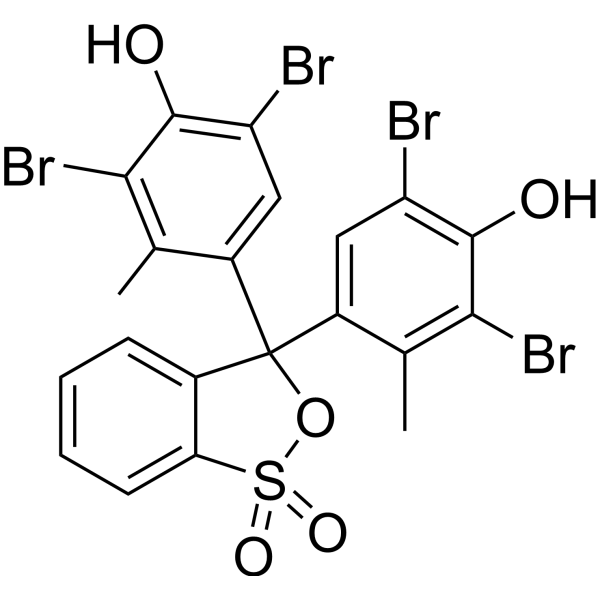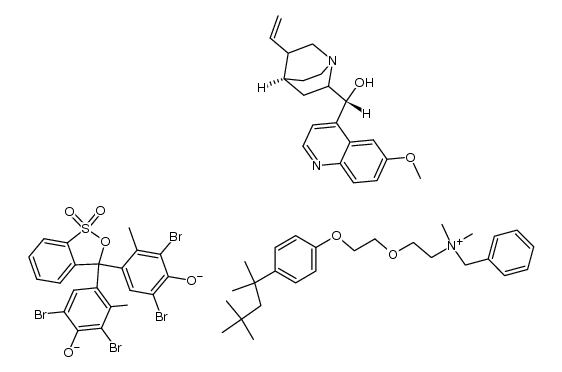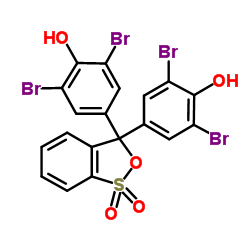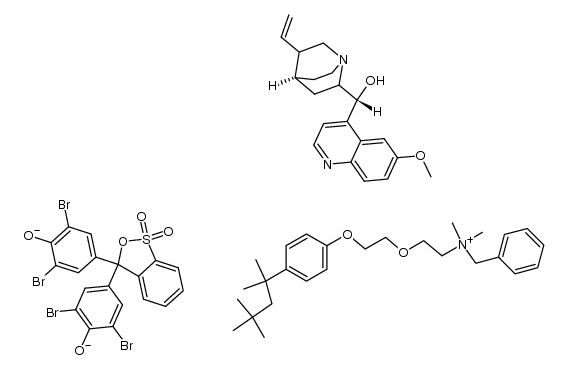60-93-5
| Name | Quinine dihydrochloride |
|---|---|
| Synonyms |
(8α,9R)-6'-Methoxycinchonan-9-ol dihydrochloride
QuinineDihydrochlorideInjection MFCD00151247 Quinine dihydrochloride acidquininehydrochloride Cinchonan-9-ol, 6'-methoxy-, (8α,9R)-, hydrochloride (1:2) UNII:8C3EMH7D9X QUININE DI HCL chinindihydrochlorid quininebimuriate Quinine dichloride EINECS 200-493-4 |
| Description | Quinine dihydrochloride is an orally active alkaloid extracted from cinchona bark and can be used in anti-malarial studies. Quinine dihydrochloride is a potassium channel inhibitor that inhibits WT mouse Slo3 (KCa5.1) channel currents evoked by voltage pulses to +100 mV with an IC50 of 169 μM[1][2]. |
|---|---|
| Related Catalog | |
| In Vitro | Quinine dihydrochloride (150 μM, 30 min) inhibits the proliferation and cytostatic effects of DENV (Dengue virus) in human hepatocarcinoma HepG2 cell line[1]. Quinine dihydrochloride (37.5-150 μM, 24 hours) significantly reduces viral DENV RNA and protein levels in a dose-dependent manner in human hepatocarcinoma HepG2 cell line [1]. Cell Proliferation Assay[1] Cell Line: Human hepatocarcinoma cell line(HepG2) Concentration: 150 μM Incubation Time: 30 min Result: Inhibited DENV virus replication with 19% yield compared to untreated. Reduced DENV-positive cells from 23.28% to 12.05% in a dose-dependent manner. |
| In Vivo | Quinine dihydrochloride (oral gavage, 12 or 15 mg/kg, every week, 16 weeks) has some tumor suppressing effect on skin cancer in Swiss albino mice[2]. Quinine dihydrochloride (oral gavage, 10 mg/kg, everyday, 8 weeks) causes a decrease in the antioxidant defense system of rat testicular tissue such as SOD, CAT and GSH enzyme activity in male adult albino rats[3]. Animal Model: Swiss albino mice 7-8-weeks (weighing 24 g)[2] Dosage: 12 mg/kg, 15 mg/kg Administration: Oral gavage; every week; 16 weeks Result: Resulted in a significant reduction in tumor size and weight at 12 mg/kg and little effect at higher dose of 15 mg/kg. |
| References |
| Boiling Point | 495.9ºC at 760 mmHg |
|---|---|
| Melting Point | 238-2400C |
| Molecular Formula | C20H26Cl2N2O2 |
| Molecular Weight | 397.339 |
| Flash Point | 253.7ºC |
| Exact Mass | 396.137146 |
| PSA | 45.59000 |
| LogP | 4.71510 |
| Stability | Stable, but may be light sensitive. Efflorescent. Incompatible with strong oxidizing agents. |
CHEMICAL IDENTIFICATION
HEALTH HAZARD DATAACUTE TOXICITY DATA
MUTATION DATA
|
| Hazard Codes | Xi: Irritant; |
|---|---|
| Risk Phrases | R36/37/38 |
| Safety Phrases | 26-36 |
| RIDADR | 1544 |
| Packaging Group | III |
| Hazard Class | 6.1(b) |
| HS Code | 2939200000 |
|
~%
Detail
|
| Literature: Canadian Journal of Chemistry, , vol. 69, # 6 p. 937 - 944 |
|
~%
Detail
|
| Literature: Canadian Journal of Chemistry, , vol. 69, # 6 p. 937 - 944 |
| HS Code | 2939200000 |
|---|






